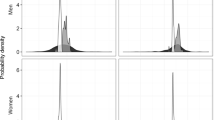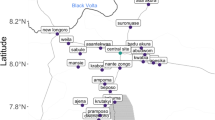Abstract
The US Environmental Protection Agency’s (US EPA) Detroit Exposure and Aerosol Research Study (DEARS) has provided extensive data on human exposures to a wide variety of air pollutants and their impact on human health. Previous analyses in the DEARS revealed select cardiovascular (CV) health outcomes such as increase in heart rate (HR) associated with hourly based continuous personal fine particulate matter (PM2.5) exposures in this adult, non-smoking cohort. Examination of time activity diary (TAD), follow-up questionnaire (FQ) and the continuous PM2.5 personal monitoring data provided the means to more fully examine the impact of discreet human activity patterns on personal PM2.5 exposures and changes in CV outcomes. A total of 329 343 min-based PM2.5 personal measurements involving 50 participants indicated that ∼75% of these total events resulted in exposures <35 μg/m3. Cooking and car-related events accounted for nearly 10% of the hourly activities that were identified with observed peaks in personal PM2.5 exposures. In-residence cooking often resulted in some of the highest incidents of 1 min exposures (33.5–17.6 μg/m3), with average peaks for such events in excess of 209 μg/m3. PM2.5 exposure data from hourly based personal exposure activities (for example,, cooking, cleaning and household products) were compared with daily CV data from the DEARS subject population. A total of 1300 hourly based lag risk estimates associated with changes in brachial artery diameter and flow-mediated dilatation (BAD and FMD, respectively), among others, were defined for this cohort. Findings indicate that environmental tobacco smoke (ETS) exposures resulted in significant HR changes between 3 and 7 h following the event, and exposure to smells resulted in increases in BAD on the order of 0.2–0.7 mm/μg/m3. Results demonstrate that personal exposures may be associated with several biological responses, sometimes varying in degree and direction in relation to the extent of the exposure.
This is a preview of subscription content, access via your institution
Access options
Subscribe to this journal
Receive 6 print issues and online access
$259.00 per year
only $43.17 per issue
Buy this article
- Purchase on Springer Link
- Instant access to full article PDF
Prices may be subject to local taxes which are calculated during checkout



Similar content being viewed by others
References
Lewis T, Robins T, Dvonch J, Keeler G, Yip FY, Mentz GB et al. Air pollution-associated changes in lung function among asthmatic children in Detroit. Environ Health Perspect 2005; 113: 1068–1075.
Keeler J, Dvonch T, Yip F, Parker E, Isreal B, Marsik FJ et al. Assessment of personal and community-level exposures to particulate matter among children with asthma in Detroit, Michigan, as part of Community Action Against Asthma (CAAA). Environ Health Persp 2002; 110 (Suppl 2): 173–181.
Rohr A, Wagner J, Morishita M, Kamal A, Keeler G, Harkema R . Cardiopulmonary responses in spontaneously hypertensive and Wistar-Kyoto rats exposed to concentrated ambient particles from Detroit, Michigan. Inhalation Toxicol 2010; 22: 522–533.
Hammond D, Dvonch J, Keeler G, Parker E et al. Sources of ambient fine particulate matter at two community sites in Detroit, Michigan. Atmos Environ 2008; 42: 720–732.
Duval R, Olson D, Norris G, Burke J, Vedantham R, Williams R . Determining spatial variability in PM2.5 source impacts across Detroit, MI. Atmos Environ 2012; 47: 491–498.
Baxter L, Barzyck T, Vette A, Croghan C, Williams R . Contributions of diesel truck emissions to indoor elemental carbon concentrations in homes proximate to the Ambassador Bridge. Atmos Environ 2008; 42: 9080–9086.
Detroit Free Press. 48217: Life in Michigan’s most polluted Zip code. 20 June 2010.
Klepeis N, Nelosn W, Ott W, Robinson J, Tsang AM, Switzer P et al. The National Human Activity Pattern Survey (NHAPS): a resource for assessing exposure to environmental pollutants. J Exp Sci Environ Epidemiol 2001; 11: 231–252.
Wallace L, Williams R, Rea A, Croghan C . Continuous week long measurements of personal exposures and indoor concentrations of fine particles for 37 health-impaired North Carolina residents for up to four seasons. Atmos Environ 2005; 40: 399–414.
Williams R, Suggs J, Rea A, Sheldon L, Rodes C, Thornburg J . The Research Triangle Park particulate matter panel study: modeling ambient source contribution to personal and residential PM mass concentrations. Atmos Environ 2003; 37: 5365–5378.
Olson DA, Burke JM . Distributions of PM2.5 source strengths for cooking from the Research Triangle Park particulate matter panel study. Environ Sci Technol 2006; 40: 163–169.
Williams R, Creason J, Zweidinger R, Watts R, Sheldon L, Shy C . Indoor, outdoor, and personal exposure monitoring of particulate air pollution: the Baltimore elderly-exposure pilot study. Atmos Environ 2000; 34: 4193–4204.
Brook R, Bard R, Burnett R, Shin H, Vette A, Croghan C et al. The associations between daily community and personal fine particulate matter levels with blood pressure and vascular function among non-smoking adults. Occup Env Med 2001; 68: 224–230.
Williams R, Brook R, Bard R, Hwashin S, Burnett R . Impact of nitrogen dioxide and select particulate matter component concentrations on cardiovascular function alterations in a general population. Int J Env Health Res 2012; 22: 71–91.
Brook R, Shin H, Bard R, Burnett R, Vette A, Croghan C et al. Exploration of rapid effects of personal fine particulate matter exposure on hemodynamics and vascular function during the same day. Env Health Persp 2001; 119: 688–694.
He F, Shaffer M, Colon-Rodriguez M, Bixler E, Vgontzas A, Williams R et al. Acute Effects of fine particulate air pollution on ST segment height- the APCAR study. J Env Health 2010; 9: 68.
He F, Shaffer M, Li X, Colon-Rodriguez S, Wolbrette D, Williams R et al. Individual-level PM2.5 exposure and time course of impaired heart rate variability-the APACR Study. J Exp Sci Environ Epidemiol 2011; 21: 65–73.
George B, Whitaker D, Gilliam R, Swall J, Williams R . Relationship between PM2.5 collected at residential outdoor locations and a central site. J Air Waste Manage Assoc 2010; 60: 1094–1104.
George B, Schultz B, Palma T, Vette A, Williams R . An evaluation of EPA’s National-Scale Air Toxics Assessment (NATA): comparison with benzene measurements in Detroit, Michigan. Atmos Environ 2011; 45: 3301–3308.
Rodes C, Lawless P, Thornburg J, Croghan C, Vette A, Williams R . DEARS particulate matter relationships for personal, indoor, outdoor, and central site settings for a general population cohort. Atmos Environ 2010; 44: 1386–1399.
Thornburg J, Rodes C, Lawless P, Williams R . Spatial and Temporal variability of outdoor coarse particulate matter mass concentrations measured with a new coarse particle sampler during the Detroit Exposure and Aerosol Research Study. Atmos Environ 2010; 43: 4251–4258.
Williams R, Rea A, Vette A, Croghan C, Whitaker D, Stevens C et al. The design and field implementation of the Detroit Exposure and Aerosol Research Study (DEARS). J Expo Sci Environ Epidemiol 2009; 19: 643–659.
Meng QY, Spector D, Colome S, Turpin B . Determinants of indoor and personal exposure to PM2.5 of indoor and outdoor origin during the RIOPA study. Atmos Environ 2009; 43: 5750–5758.
McCormack M, Breysse P, Hansel N, Matsui E, Tonorezos ES, Curtin-Brosnan J et al. Common household activities are associated with elevated particulate matter concentrations in bedrooms of inner-city Baltimore pre-school children. Environ Res 2008; 106: 148–155.
Phillips M, Rodes C, Thornburg J, Shamo F et al. Optimizing recruitment and retention strategies for the Detroit Exposure and Aerosol Research Study (DEARS). RTI Press 2010 doi:10.3768/rtipress.2010.2010.mr0021.1011 Durham, NC, USA.
Lawless P, Thornburg J, Rodes C, Williams R . Personal exposure monitoring wearing protocol compliance: An initial assessment of quantitative measurement. J Exp Sci Environ Epidemiol 2010; 22: 274–280.
Lawless P, Rodes C, Ensor D . Multiwavelength absorbance of filter deposits for determination of environmental tobacco smoke and black carbon. Atmos Environ 2004; 38: 3373–3383.
Williams R, Jones P, Croghan C, Thornburg J, Rodes C . The influence of human and environmental exposure factors upon personal NO2 exposure. J Exp Sci Environ Epidemiol 2012; 22: 109–115.
EPA. The Detroit Exposure and Aerosol Research Study (DEARS) 2012 Website located at www.epa.gov/dears.
Crogan C, Williams R . Detection and Quantification of Asymmetrical Peaks. Proceedings of the 2007 SAS Global Forum 2007: San Antonio, TX, USA.
West B, Welch K, Galecki A . Linear Mixed Models. Chapman & Hall/CRC: New York, NY, USA. 2007.
Fox J Mixed-Effects Models. Appendix to An R and S-PLUS Companion to Applied Regression http://cran.r-project.org/doc/contrib/Fox-Companion/appendix.html accessed on 2012.
Ferro A, Kopperud R, Hildemann L . Elevated personal exposure to particulate matter from human activities in a residence J. Exposure Anal Env Epidemiol 2004; 14: 7–20.
Baxter L, Clougherty J, Laden F, Levy J . Predictors of concentrations of nitrogen dioxide, fine particulate matter, and particle constituents inside of lower socioeconomic status urban homes. J Expo Sci Env Epidemiol 2007; 17: 433–444.
Peters A, von Klot S, Heier M, Trentinaglia I, Hörmann A, Wichmann H et al. Exposure to traffic and the onset of myocardial infarction. NEJM 2004; 351: 1721–1730.
Ko YC, Cheng LS, Lee C, Huang JJ, Huang MS, Kao EL et al. Chinese food cooking and lung cancer in women nonsmokers. Am J Epidemiol 2004; 151: 140–147.
Bridges B . Fragrance: emerging health and environmental concerns. Flavour Fragr J 2002; 17: 361–371.
Chuang H, Jones T, BéruBé K . Combustion particles emitted during church services: implications for human respiratory health. Environ Inter 2012; 40: 137–142.
Jetter J, Guo Z, McBrian J, Flynn M, Leith D . Characterization of emissions from burning incense. SciTotal Environ 2002; 295: 51–67.
Ohura T, Amagai T, Shen X, Li S, Zhang P, Zhu L . Comparative study on indoor air quality in Japan and China: characteristics of residential indoor and outdoor VOCs. Atmos Environ 2009; 43: 6352–6359.
Brook E, Franklin B, Cascio W, Hong Y, Howard G, Lipsett M et al. Air pollution and cardiovascular disease: A statement for healthcare professionals from the expert panel on population and prevention science of the American Heart Association. Circulation 2004; 109: 2655–2671.
Acknowledgements
The US Environmental Protection Agency through its Office of Research and Development funded and conducted the research described here under contract 68-D-00-012 (RTI International), EP-D-04-068 (Battelle Columbus Laboratory), 68-D-00-206 and EP-05-D-065 (Alion Science and Technology). It has been subjected to Agency review and approved for publication. Mention of trade names or commercial products does not constitute an endorsement or recommendation for use. The US EPA acknowledges the staffs of Alion Science and Technology for preparation of sampling media and RTI International for overseeing field data collections. We thank the DEARS cohort for their participation.
Author information
Authors and Affiliations
Corresponding author
Ethics declarations
Competing interests
The authors declare no conflict of interest. All human interactions in the collection of the data presented were approved by Institutional Review Boards and all Human Subjects Approving Offices associated with the study.
Additional information
Supplementary Information accompanies the paper on the Journal of Exposure Science and Environmental Epidemiology website
Supplementary information
Rights and permissions
About this article
Cite this article
Hammond, D., Croghan, C., Shin, H. et al. Cardiovascular impacts and micro-environmental exposure factors associated with continuous personal PM2.5 monitoring. J Expo Sci Environ Epidemiol 24, 337–345 (2014). https://doi.org/10.1038/jes.2013.46
Received:
Revised:
Accepted:
Published:
Issue Date:
DOI: https://doi.org/10.1038/jes.2013.46
Keywords
This article is cited by
-
Non-volatile particle emissions from aircraft turbine engines at ground-idle induce oxidative stress in bronchial cells
Communications Biology (2019)
-
Comparison of particulate matter exposure estimates in young children from personal sampling equipment and a robotic sampler
Journal of Exposure Science & Environmental Epidemiology (2017)



